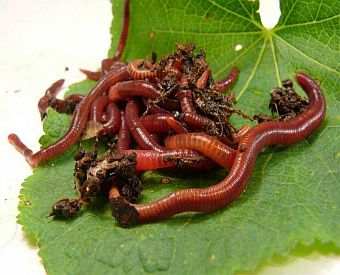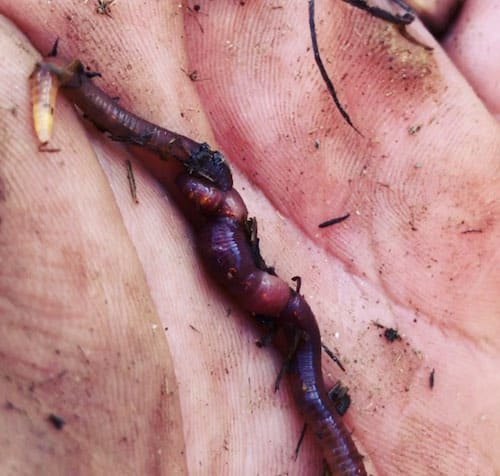Optimizing the Perks of Red Wiggler Worms: A Comprehensive Manual for Home Gardeners and Urban Farmers
In the realm of sustainable gardening techniques, red wiggler worms stand as unhonored heroes, silently transforming organic waste right into nutrient-rich spreadings that can function wonders for dirt wellness. By exploring the ins and outs of exactly how to effectively care for and make the most of the advantages of red wiggler worms, people can open a wealth of chances for improving the sustainability and efficiency of their horticulture ventures.
Comprehending Red Wiggler Worms
Red Wiggler worms, renowned for their reliable composting capabilities, are a types of earthworms commonly made use of in vermiculture techniques. These worms, scientifically known as Eisenia fetida, thrive in decomposing natural product, making them perfect candidates for composting.
One secret quality of Red Wiggler worms is their reproductive rate. These hermaphroditic animals possess both male and female reproductive body organs, allowing them to recreate swiftly under favorable conditions. A fully grown Red Wiggler can create numerous spawn in a short duration, making certain a consistent populace within a composting system.

Establishing a Worm Container
When developing a worm bin for vermiculture objectives, proper prep work and attention to detail are important for creating a conducive environment for Red Wiggler worms,. Begin by picking a suitable container for your worm bin. This can be a plastic or wood container with a cover to maintain moisture degrees and protect the worms from light. Guarantee that the container has water drainage holes at the bottom to stop waterlogging.

Location the worm container in an amazing, dark place away from direct sunlight and severe temperature levels. By adhering to these actions, you can establish up a prospering worm container that will effectively process organic waste right into nutrient-rich vermicompost for your yard.
Feeding and Keeping Worms
Making certain a balanced and nourishing diet plan is vital for the health and performance of Red Wiggler worms in a vermiculture system. It is essential to avoid feeding them citrus fruits, onions, garlic, milk items, meat, and oily foods as these can be damaging to the worms or trigger unpleasant odors in the container.
Proper wetness degrees are additionally crucial for the well-being of Red Wiggler worms. The bedding should really feel like a wet sponge, supplying sufficient dampness for the worms to breathe through their skin. On a regular basis inspect the moisture degrees and change by including water or dry bed linens product as required. Furthermore, check these guys out maintaining proper temperature conditions in between 55-77 ° F(13-25 ° C )will certainly make sure ideal worm task and reproduction. By faithfully checking their diet plan, dampness, and ecological problems, home gardeners and urban farmers can sustain a efficient and healthy and balanced Red Wiggler worm population for composting objectives.
Collecting Worm Spreadings
To successfully remove nutrient-rich worm spreadings from the vermicompost, an organized harvesting procedure is vital for maximizing the composting advantages. Red Wiggler Worms. The very first step in harvesting worm castings is to urge the worms to move to one side of the container. This can be attained by placing fresh food scraps on one side and leaving the opposite uninterrupted for a few days. As soon as most of worms have dodged with fresh food, the castings can be collected from the contrary side.
After the spreadings have been gathered, it is very important to divide any staying worms from the castings to prevent damaging them during storage space or application. One efficient approach is to produce cone-shaped stacks of castings under brilliant light. Worms will intuitively move far from the light, allowing for simple separation and elimination.
Finally, the harvested worm spreadings must be stored in a great, dark, and completely dry area to maintain their top quality and performance as a nutrient-rich dirt change. By complying with these actions, home garden enthusiasts and urban farmers can make the most of the advantages of red wiggler worms in their vermicomposting systems.
Using Worm Castings in Gardening
The consolidation of nutrient-rich worm castings right into yard soil can dramatically enhance additional reading plant growth and overall soil health and wellness. Worm spreadings, additionally called vermicast, are an all-natural plant food produced by red wiggler worms as they damage down raw material. These castings are rich in important nutrients like nitrogen, phosphorus, potassium, and valuable microbes that promote plant growth and boost soil structure.
When using worm castings in gardening, it is necessary to blend them completely into the soil or use them as a leading clothing around plants. The slow-release nature of worm castings makes sure a stable supply of nutrients to plants in time, minimizing the visit here danger of nutrient leaching and promoting long-term soil fertility. Additionally, worm spreadings aid enhance soil oygenation, water retention, and microbial activity, developing a healthy and balanced atmosphere for plant origins to flourish.

Conclusion
In verdict, the use of red wiggler worms in home gardening and urban farming can substantially benefit soil wellness and plant development. By comprehending exactly how to set up and maintain a worm bin, feed the worms appropriately, and gather their nutrient-rich castings, gardeners can take full advantage of the benefits of these earthworms.
In the world of sustainable gardening methods, red wiggler worms stand as unhonored heroes, quietly transforming natural waste right into nutrient-rich spreadings that can work wonders for soil health.When developing a worm bin for vermiculture purposes, correct preparation and attention to detail are essential for creating a conducive setting for Red Wiggler worms. The very first action in gathering worm spreadings is to motivate the worms to migrate to one side of the bin. Worm castings, additionally known as vermicast, are an all-natural fertilizer generated by red wiggler worms as they break down natural issue. By comprehending exactly how to establish up and preserve a worm container, feed the worms correctly, and collect their nutrient-rich castings, garden enthusiasts can maximize the benefits of these earthworms.